So, you are traveling to Peru on vacation and are excited to take in the sights of this beautiful South American country. You have 3 weeks in Peru to visit the historical, cultural, and popular destinations. Where should you begin? What are the must-see locations this phenomenal country has to offer?
Peru is a diverse country with varying landscapes, cultures, and history. With 3 weeks in Peru, tourists can discover several significant locations including the historical lost city of Machu Picchu, the remarkable landscapes and architecture, and the music, art, and culture of big cities like Lima, Cusco, and Arequipa.
To discover Peru like never before, check out our itinerary for 3 weeks in Peru, which features stays in 3 of Peru’s major cities.
Before You Leave
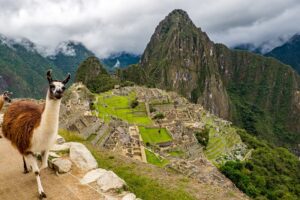
You may want to consider getting travel insurance before your 3 weeks in Peru. Travel insurance can help you protect your investment. If you need to cancel your trip due to an emergency, travel insurance can help you get reimbursed for prepaid costs.
In addition, the US Department of State encourages international travelers to get travel insurance to help with emergency medical issues, emergency transportation, or the like. Even though it may seem like an extra cost to an already expensive trip, most travel insurance is affordable and worth the investment.
Make sure to have an up-to-date passport and everything you need packed for the trip. We recommend packing sunscreen, bug spray, sunglasses, and layers (such as a light cardigan or shorter sleeves) to be ready for differences in temperatures.
Research the weather and average temperatures for your 3 weeks in Peru. Try to think about the types of activities you’ll be doing and pack accordingly. Also, check any flight cargo restrictions.
Week 1: Lima
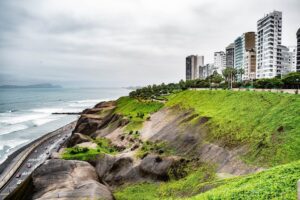
The capital of Peru is Lima. This large city has over 9 million people living in it. It is a fabulous place to start your 3 weeks in Peru. Francisco Pizarro founded the city in 1535. However, the area had inhabitants much earlier than that. They were not originally Incas, but natives known as the Itchyma.
The river Rimac feeds the city. Lima is located on the Pacific Ocean side in the coastal plains. It is technically in a desert climate, but its closeness to the ocean gives the area milder temperatures. Temperatures tend to remain on average between 58 – 79 degrees Fahrenheit.
While in Lima, there are several places you’ll want to visit. A week should be plenty of time to check out all the best sights.
Day 1: Arrival
You will take an international flight from your home country to Lima.
If you travel from the US, the travel time will vary based on your location. Flying from Atlanta, it’ll take about 6.5 hours and cost approximately $500+. Those coming from the West Coast in Los Angeles will have an 8-hour and 20-minute flight that costs about $588+.
Once you arrive in Lima, you’ll be exhausted and need to check into your hotel. Popular districts to stay in Lima are the Miraflores, Barranco, San Isidro, and the Historic Center.
Day 2: City Tour
On your first full day in Lima, you’ll want to take in the sights around the city. You have many touring options in Lima, including walking, biking, and bus tours. There are even some food tours you could take where you can try out deluxe dishes at some of the best restaurants in town.
Many of these tours will take you through the historic center where you can see the Spanish colonial architecture and beautiful cathedrals from the outside. You can also see the Peruvian Parliament buildings in the Plaza Bolivar. Plaza de Armas is a colorful main square. Some will also take you by the Huaca Pucllana, a site where pre-Incan pyramids are still intact in the city center.
There are also several small parks, monuments, and sculptures for you to see on these tours. A bus tour can take around 4 hours. Many of the walking tours are based on which location you choose to walk in. If you limit your walking to around the Historic Center, it is between 2.5 to 3.5 hours long.
After your tours, you can take a break at one of the local restaurants. At nightfall, be sure to stop by El Circuito Magico del Agua. This park has 15 water sources and a light show to watch. The fountains form shapes and figures in the air. There is also a maze and tunnel of water in this park. In the background, you’ll hear beautiful Peruvian music to set the mood.
Day 3: Go Shopping in Miraflores
Miraflores is a popular district for hotels, parks, shops, restaurants, and many entertainment opportunities. The Malecon de la Reserva is a 6-mile stretch of boardwalk with everything you could dream of. If you enjoy shopping or want to take a day to get souvenirs, the Larcomar Shopping Center is a wonderful place to stop. You can also enjoy delicious cuisine along the way.
Day 4: Visit Local Museums
There are several museums to visit in Lima.
One place you don’t want to miss is the San Francisco Church. You can take a tour of the catacombs of this monastery built in the 1600s. There are over 25,000 crypts beneath the church and an intact library still open to the public.
You can also check out the National Museum, which is the largest museum in Peru. It has many objects, textiles, ceramics, sculptures, and models that show the history of Peru from the Stone Age to the Inca era.
Larco Museum is a large museum with pre-Columbian art. It has over 40,000 pieces of ceramics with artifacts from all over South America.
Day 5: Enjoy the Beach
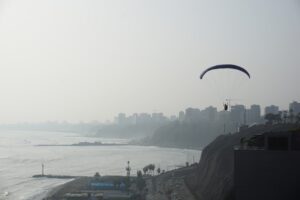
The city of Lima sits on the edge of the sea, so there are some great beaches if you love to surf. The waters are cold, around 59 degrees Fahrenheit, and mostly gentle. You can even take surfing lessons along the coast.
If surfing isn’t your style, you could go paragliding over the coast. Near the lighthouse on the cliffs of Miraflores, there is a paragliding company. You can glide over the beautiful landscape taking in the amazing views.
You can also paddle, fish, and sail near the beach. It is a beautiful place to relax and have some fun in the sun.
Once you’re hungry, you can walk to the boardwalk. There are many popular restaurants for you to visit here.
Day 6: Check out the Local Parks
There are many local parks for you to check out in Lima. One of the most popular is Park del Amor in Miraflores. This park has a sculpture of two lovers kissing by Victor Delfin. It also has beautifully decorated gardens with flowers and hearts. The views in this park give you a picturesque look at the city’s coastline. You don’t have to pay to access this park and it is conveniently located off the main boardwalk.
Kennedy Park is another popular tourist destination. It is in Miraflores and cats roam freely through it. There are local food shops and stalls surrounding the park that you can enjoy while there. It is also a popular place for the city to hold cultural events.
Day 7: Depart for Cusco
Most people travel from Lima to Cusco by domestic flight. The flight is around an hour and a half, and the average cost is between $80 to $90 round trip, based on the season and how early you book. Last-minute booking will cost more. There are multiple daily flights, but they can fill up fast.
It is also important to arrive at the airport a couple of hours before the flight. You will also want to consider travel time between your hotel in Lima and the airport when calculating how early you need to leave.
Be aware that traveling from Lima to Cusco during your 3 weeks in Peru may result in altitude sickness.
Alternatively, you can take a bus from Lima to Cusco, but this usually lasts 21-24 hours. There are no trains that connect the two cities and traveling by car is also unadvisable.
Week 2: Cusco
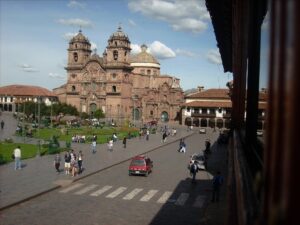
The city of Cusco is home to around 430,000 people. It is in the southeastern part of Peru in the Urubamba Valley in the Andes Mountains. Historically, Cusco was the capital of the Incan empire. It is a popular tourist destination because it combines Incan and colonial Spanish sites. Cusco is typically dry and temperate. Temperatures range between 65-80 degrees Fahrenheit.
You’ll have lots to do and see here, so let’s check out the itinerary for your second week in Peru.
Day 8: Arrive and Settle
Once you arrive in Cusco, you’ll want to settle into the hotel and rest a bit. The most popular area for tourists to stay is the Historic Center, which is great for people who want to be close to the airport. This area is full of many of the historic buildings you may be interested in seeing. There are plenty of hotels and resorts, eateries, and shops here.
Another popular place to stay in Cusco during your 3 weeks in Peru is Plaza de Armas. This is a great locale for people looking for a vibrant nightlife. There are several nightclubs, entertainment, arcades, cuisine, and hotels in this area.
If you’re looking for a calm and unique area, San Blas is in a residential area of Cusco. It has cobblestone streets and colonial homes that give it a unique charm. Artisan shops, art galleries, restaurants, and museums are all nearby.
Be sure to book your hotel in advance so you can get the best accommodation. Spend the afternoon unpacking and settling in before heading out for a bite to eat at one of the local eateries.
Day 9: Tour the City
As with Lima, you’ll want to tour the city on the first day. The Historic Center in Cusco is a great first stop. You can do a self-guided tour or there are several options for walking or bus tours with great guides ready to give you details about the beautiful sites around the city.
You can visit the main square, which is a bustling place full of visitors. The Coricancha temple is also nearby. This temple was originally a pre-Incan sacred place. The colonial Convent of Santo Domingo was built on top of it, but much of the original stonework from pre-Incan times remains.
You can also check out the Cathedral of Our Lady of Asuncion of Cusco. This is the second largest and oldest Cathedral on the American continent. It has a famous painting “The Last Supper of Jesus” by Marco Zapata Sinchi-Roca inside.
At night, you can attend the Centro Qosqo de Arte Nativo. It is a show with folkloric dancers. You can also check out some local bars or take Salsa and Bachata lessons.
Day 10: Trek to Machu Picchu
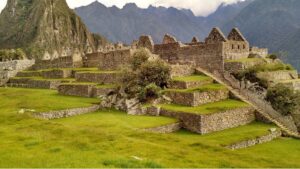
A must-see during your 3 weeks in Peru is the lost city of Machu Picchu. Simply take a bus or train to the site, which is located about 210 km away from Cusco. It takes 3-4 hours to get there.
Then, you can spend the day touring these Incan ruins and all the beauty of this remarkable site.
Day 11: Explore Local Ruins
Machu Picchu isn’t the only archaeological site near Cusco. Sacsayhuaman is about 14 minutes outside of Cusco. This large fortress only has a small portion still standing, but these walls are massive, and the zigzagging terraces are worth seeing.
Qenko is 14 minutes away from Sacsayhuaman, so you could travel to both on the same day. This site is called a huaca, which is a naturally occurring rock formation that the Inca turned into a temple. There are polished walls and a table and chairs inside of a natural cave. It’s a spectacular place to visit during your 3 weeks in Peru.
Tambomochay is about 12 minutes from Sacsayhuaman. It is another site where you can see the same day as the others. This site has 4 leveled terraces built into a hill. An underground spring shoots up and runs down the terrace.
Each of these locations would take about 2 hours to tour each, so plan accordingly.
Day 12: Check out Museums.
There are several museums you can visit while in Cusco. Here are some of the most popular:
- Inka Museum
- Museo de Arte Precolombino
- Coca Museum
- Regional Historical Museum
- Museum of Religious Art
- Chocolate Museum
You could easily spend a day checking out a few of these and the others around the city.
Day 13: Local Cuisine and Music
If you’re looking to experience some of the local Cusco nightlife, there are several places where you can enjoy live Latin rock, pop, and salsa music. There are also late-night dance clubs for you to discover in Peru.
There are also several nice restaurants for you to check out the local cuisine.
Day 14: Pack up and Travel
Traveling by plane from Cusco to Arequipa is the quickest and easiest way. It takes about 1 hour to go between the two cities. Book your flight in advance. Latam and Peruvian offer two flights daily between the two cities.
Alternatively, you can travel by bus. This takes about 9-11 hours. Buses will be far cheaper than traveling via airplane. A lot of tourists choose this option.
You can also take a train from Cusco to Arequipa during your 3 weeks in Peru, but you’ll need to adjust your daily itinerary because the train takes 2.25 days to arrive at its destination. This is also the most expensive way to travel between the two cities. The train leaves on a Thursday and arrives at Arequipa on Saturday afternoon. There are several stops along the way. This is the scenic route.
Week 3: Arequipa
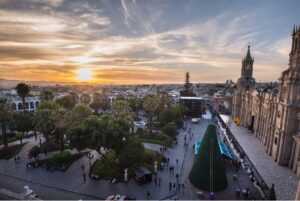
The second most populated city in Peru is Arequipa. This place has around 1,296,278 inhabitants. Arequipa is in the Andes mountains. Misti, Pichu, and Chachani are volcanoes that line the background of this city’s landscape. Temperatures range from around 48-73 degrees Fahrenheit.
Before the Spanish arrived, nomads who hunted and fished lived in this area. Pre-Incan cultures domesticated llamas, a popular animal in Peru. In 1540, Garci Manuel de Carbajal founded Arequipa.
Day 15: Get Settled
Be sure to book a hotel in a nice area of Arequipa in advance. The 3 most popular districts are the Historical Center, Yanahuara, and Cayma Districts. Each has its attractions. The Historic Center is close to most of the tourist attractions. There are several architectural beauties and street markets you’ll be able to visit close by.
If at this point you are looking for more budget-friendly places to stay, near the airport there are some great budget hotels for your time in Arequipa. Rest, eat some local cuisine, and get ready for the last leg of your adventure in Peru.
Day 16: Tour the City
As with the other cities, Arequipa offers many walking, bus, and biking tours. You can explore the city on your own or with a guide. Here are some of the places you’ll stop on your tour:
- Church of the Society of Jesus
- Fundo El Fierro
- Monastery of Santa Catalina
- Plaza de Armas
- Los Tambos
- Puente Bolognesi
Most of the churches on this list will only be external tours. You must take separate tours to check out the inside.
Day 17: Enjoy the Architecture of the Churches
Monasterio de Santa Catalina is a beautiful colonial-era church. It is so large that it is called a city within a city. You can take a guided tour to see the history and the culture of this place. You’ll be able to see the Silence Courtyard, the Cloister of the Orange Trees, the Major Cloister, the Kitchen, the Bell Tower, and the Church.
Another church you may wish to tour is the Cathedral of Arequipa. It is built in a Neo-Renaissance style with Gothic influences. It is near a region that gets a lot of earthquakes. Some areas have had to be rebuilt. You can take a tour through the cathedral to see the beautiful columns, portals, and arches.
Day 18: Check out Museums
If you love history, the Museo Historico Municipal is a suitable place to check out. The exhibits are broken down into different periods from pre-Columbian times to the War of the Pacific.
El Museo de la Universidad Nacional de San Agustín also has some great pre-Incan artifacts, colonial furniture, and Peruvian art.
The Museo de Arte Virreinal de Santa Teresa is a living museum that is a 17th-century convent with decorated murals, antique paintings, and metalwork.
Another museum you could check out is the Museo Arqueológica de La Universidad Catolica de Santa Maria. This museum has a collection of pre-Incan artifacts and descriptions of archaeological sites.
There are also many other informative museums you could check out during your stay in Arequipa.
Day 19: Climb El Misti
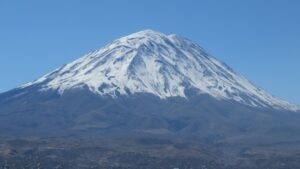
An hour outside of Arequipa you can take a hike up the volcano. Some of these tours can take 2 days, so you may need to adjust your schedule accordingly. This is a dangerous activity and may not be right for everyone.
The peak is 19,101 feet in the air, so the air is incredibly thin. The hike itself takes 13 hours of hiking to reach the top. The trek itself is 16 miles. The temperatures are about 75 degrees at the base and around 15 degrees at the higher altitudes.
This is a difficult activity and only for people in peak conditions, but it’s an exciting and beautiful excursion if you are into adventure tourism.
Day 20: Hike the Reserva Nacional de Salinas y Aguada Blanca
If you like nature but aren’t adventurous enough to climb a volcano, you could spend a couple of days in the Reserva Nacional de Salinas y Aguada Blanca. This national reserve contains volcanoes, lagoons, wetlands, and many diverse animals and plants.
The reserve is at a higher altitude than Arequipa, so make sure to acclimate before doing any strenuous activities. The reserve stays chilly throughout the year with temperatures around 36 to 46 degrees Fahrenheit throughout the day and drastic drops at night.
While here you can check out the Toqra Interpretation Center which has photos and scale models of the landscape, wild animals, and plants in the reserve. It also has information about the local Indigenous peoples.
You can also tour the Sumbay Cave and check out 6,000 to 8,000-year-old cave paintings. There are also some old ceramic artifacts nearby.
Salinas Lake is a great stop for birdwatching. Abra de Patapampa is fun for people who enjoy mountain biking. And, of course, the volcanoes are beautiful to look at. Both Misti and Chachani are within the reserve.
Day 21: Travel Home
The journey home from Arequipa will take longer than the journey to Lima. If you are traveling home to the West Coast of the US, it’ll be about an 11-hour and 50+ minute flight. Back to Atlanta, the flight will take about 19 hours and 26 minutes and have 2 stops.
Make sure to pack all your belongings, including the great souvenirs you obtained during your 3 weeks in Peru.
Conclusion
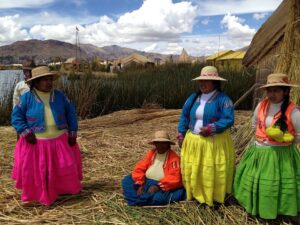
There are many beautiful and unique places to see in Peru. If you have 3 weeks in Peru, you should spend a week in the cities of Lima, Cusco, and Arequipa. There are many historical, cultural, and natural sites to see in and around these areas that are sure to delight you. With our itinerary as a guide, you can discover Peru in a new and exciting way.
